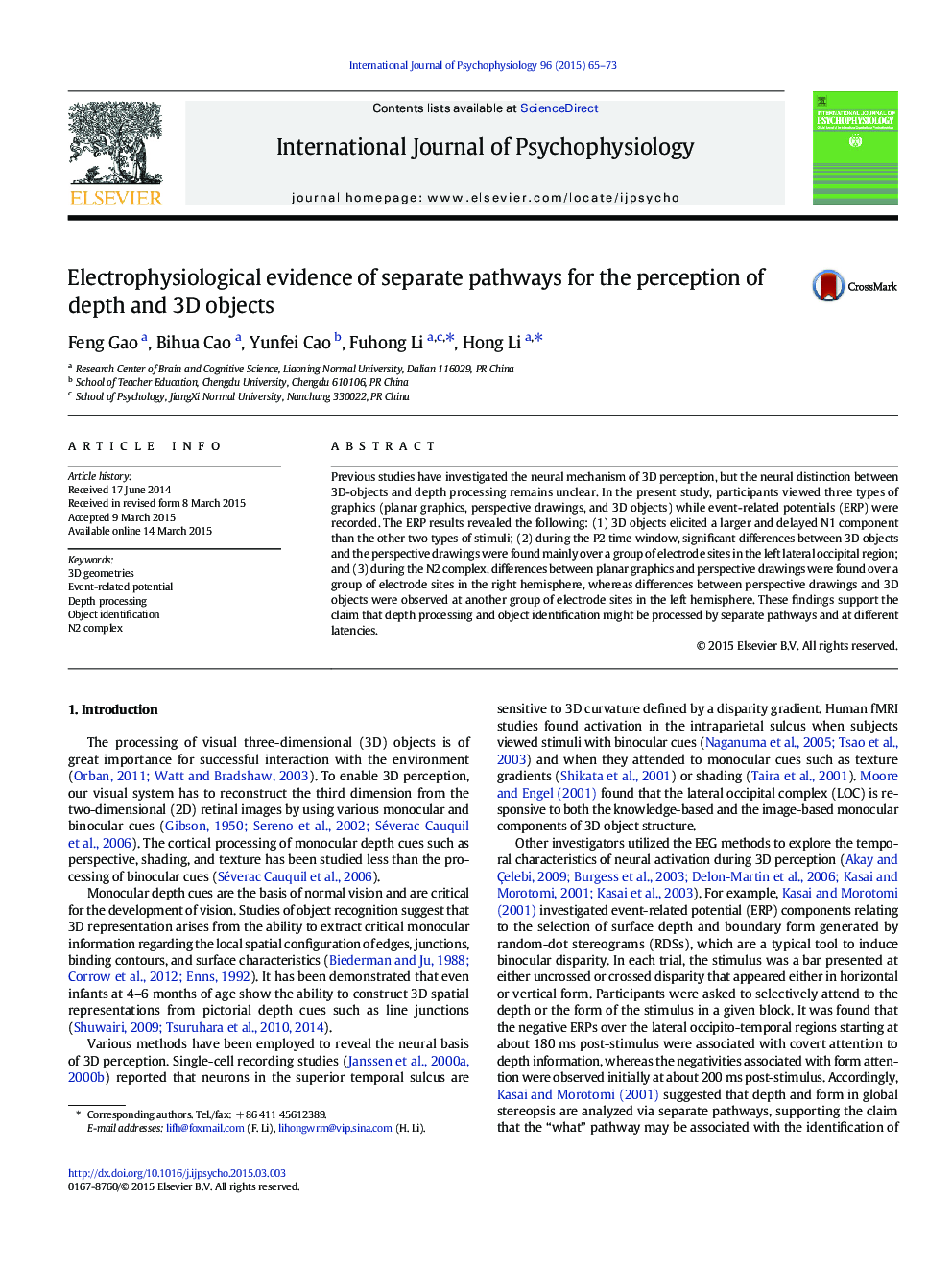| Article ID | Journal | Published Year | Pages | File Type |
|---|---|---|---|---|
| 931074 | International Journal of Psychophysiology | 2015 | 9 Pages |
•A larger and delayed N1 component was evoked by 3D objects.•The perception of 3D objects initially occurred within the P2 time window.•Depth effects were observed over the right hemisphere.•Object effects were observed over the left hemisphere.•Depth and object information might be processed by separate pathways.
Previous studies have investigated the neural mechanism of 3D perception, but the neural distinction between 3D-objects and depth processing remains unclear. In the present study, participants viewed three types of graphics (planar graphics, perspective drawings, and 3D objects) while event-related potentials (ERP) were recorded. The ERP results revealed the following: (1) 3D objects elicited a larger and delayed N1 component than the other two types of stimuli; (2) during the P2 time window, significant differences between 3D objects and the perspective drawings were found mainly over a group of electrode sites in the left lateral occipital region; and (3) during the N2 complex, differences between planar graphics and perspective drawings were found over a group of electrode sites in the right hemisphere, whereas differences between perspective drawings and 3D objects were observed at another group of electrode sites in the left hemisphere. These findings support the claim that depth processing and object identification might be processed by separate pathways and at different latencies.
